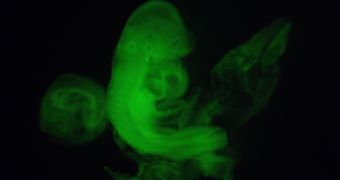Officials with the Institute of Physical and Chemical Research (RIKEN), in Japan, announce recently that they have begun a formal investigation into the work of stem cell scientist and biologist Haruko Obokata, who in late January published two papers that made her shoot to international fame.
The expert basically argued that a new type of stem cells, more malleable than induced pluripotent stem cells (iPSC), can be produced through a simple, low-tech method. She demonstrated in her papers that simple mechanical stress, or exposure to acid, can revert adult mouse cells into stem cells.
The expert, based at the RIKEN Center for Developmental Biology in Kobe, Japan, termed the procedure stimulus-triggered acquisition of pluripotency (STAP). The main issue that is now being investigated is that no other team has been able to replicate these findings.
Additional concerns are raised about the overall credibility levels of the two papers, as well as about the fact that duplicate images may have been used in the journal entries. Officials with the CDB announced on Friday, February 14, that a formal inquiry was underway to clear up this problem.
Japanese investigators were the first to demonstrate 8 years ago that fully-differentiated, adult cells in the body could be made to revert to an earlier state, which they termed pluripotency. Obokata wanted to build and expand on that research, and demonstrate a new technique for producing such stem cells.
Even when the RIKEN investigator first published her works, the international scientific community received the results with awe and skepticism. Traditionally, it takes an ensemble of four genes delivered in a particular way to create induced pluripotent stem cells (iPSC).
Harvard Medical School anesthesiologist Charles Vacanti, the corresponding author of a preliminary 2011 paper first-authored by Obokata, recently answered criticisms related to the erroneous use of some tables, figures and images in the paper published more than two years ago.
“It certainly appears to have been an honest mistake [that] did not affect any of the data, the conclusions or any other component of the paper,” he said. The expert is a co-author of both 2014 Nature papers describing the new stem cells.
But undoubtedly the main problem remains the inability of either of ten prominent stem cell scientists that Nature has contacted to replicate the results of Obokata's studies. However, most attempts did not use the same cell lines as she has used.
Not everyone is convinced that the work is flawed, however. “As an easy experiment in an experienced lab can be extremely difficult to others, I won’t comment on the authenticity of the work only based on the reproducibility of the technique in my lab,” comments cloning expert Qi Zhou, from the Institute of Zoology, in China.

 14 DAY TRIAL //
14 DAY TRIAL //